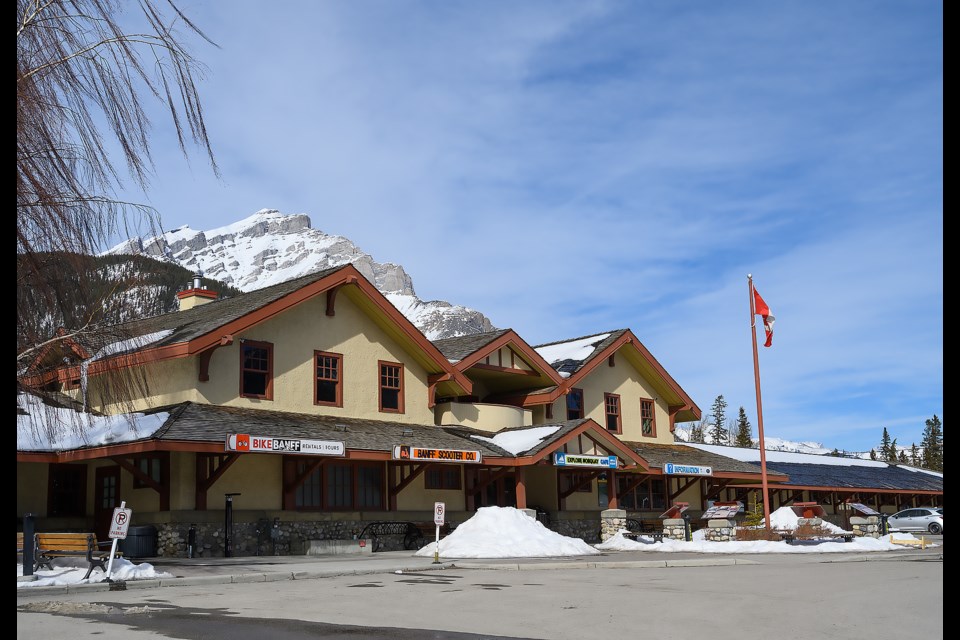BANFF – Banff’s Municipal Planning Commission has voiced support for redevelopment plans to revitalize the train station lands.
At a meeting Wednesday (March 13), the Municipal Planning Commission (MPC) gave unanimous support for a planning framework for council that allows for enhancement of lands and buildings within the planning area, including improvements to existing roads, pedestrian trails, and other related infrastructure to serve future development in the area.
MPC voiced support for policy direction in the area redevelopment plan (ARP), regarding mobility, accessibility, connectivity, transit, and vision for the area to provide additional intercept parking to reduce traffic congestion and vehicles entering the townsite.
“We understand and we know that there are differing opinions in the community,” said MPC chair Stavros Karlos following an in-camera discussion at MPC on March 13.
“From MPC’s perspective and from discussion we had in-camera, the plan aligns with the plans that have been supported by the residents of Banff and approved by council as well as other associated agencies.”
In December, council passed first reading of the ARP – a statutory plan that guides land use and development decisions on the railway lands over the next 10 to 20 years – and set a public hearing for Wednesday (March 20).
The ARP covers the development potential for the 17.5 hectares of land on the north and south sides of the railway tracks leased from Canadian Pacific Kansas City Railway by Liricon Capital, which also owns Mount Norquay ski and sightseeing resort.
The proposed plan calls for a mix of commercial uses from restaurants and bars to sports equipment rentals and retail stores within five commercial buildings and three repurposed heritage passenger train railway cars.
As part of the plan, Railway Avenue would be redesigned as a shared street for a pedestrian promenade, walkway, vehicle traffic, and cycling connection to the Legacy Trail. Rehabilitation of the 1910 federal heritage railway station, an amphitheatre and medium-density residential housing are also part of the pitch.
In addition to the existing 500-stall intercept parking lot on the south side of the tracks that opened in 2019, the plan proposes 600 stalls on the north side of the tracks by the important Fenlands Indian Grounds wildlife corridor.
The ARP also speaks to terminus infrastructure to make way for a future aerial gondola from the train station lands to Mount Norquay ski hill – which Parks Canada has consistently and repeatedly said no to – as well as the return of passenger rail from Calgary to Banff.
Town administration sought comments and recommendations on the plan from MPC, which acts in an advisory capacity from time to time on issues and policies relating to planning, land use regulation and community development such as ARPs.
MPC recommended further consideration be given to moving up the timelines for rehabilitation of the conservation area and residential housing development from long-term of more than 10 years, to within the next 10 years.
The commission believes a number of key plan themes and strategies within the ARP align with existing Town of Banff planning policy, including the community plan, Banff National Park management plan, and recommendations of the Parks Canada-struck expert advisory panel on moving people sustainably.
“MPC also recognizes that there may be areas of policy overlap that require further review and resolution,” said Karlos.
The plan incorporates commercial space that already exists on the property, credits granted to commercial buildings that were previously demolished and not reconstructed, and some awarded through the commercial growth management lottery.
Planners say administration’s analysis indicates all proposed commercial development complies with the commercial development cap and commercial growth management legislation, which came into effect in 1998.
Darren Enns, director of planning and environment for the Town of Banff, said numerous buildings have been demolished since 1998, such as the warehouse on the north side of the tracks, and those are eligible for reconstruction.
He said commercial development allotments (CDAs) have also been applied for multiple times for this site and were successful in 2013 and 2015.
“They have a five-year expiry, what’s referred to as a ‘use it or lose it’ clause,” said Enns.
“This application has been in the works, or various iterations of it, for well over five years and so we’ve been extending those CDAs within the site for that time period.”
There is a clause that allows for transfer of demolition credits and commercial development allotments to other sites, but the rules are different for various scenarios, and in this case, unused allotments would be returned to the municipality.
Enns said when it comes to floor area associated with demolition and transferability from the commercial railway district to another district, that is not allowed.
“We call this a ‘water-into-wine’ policy, where we wouldn’t want somebody demolishing a warehouse and building a hotel,” he said.
Randall McKay, manager of strategic initiatives and special projects for the Town of Banff, said an ARP does not authorize or approve individual or specific projects for development.
“A valid development permit must be obtained for any development prior to the commencement of construction,” he said.
MPC commissioner Neil Wedin declared a conflict of interest because he works for Shift Consulting, a Banff-based marketing and communications company, that does work for Liricon.




